This piece by Alicia Barrón originally appeared on The Establishment, an independent multimedia site founded and run by women.
Julio Salgado was brought to the U.S. from Mexico in 1995, when he was 11 years old.
Now 33, the visual artist has taken two decades of queer American, undocumented life and rendered them in digital celluloid, making take-no-prisoner posters as part of a production company entirely helmed by undocumented creatives (Dreamers Adrift). He has six speaking engagements (on artivism!) between now and May 5, and of course, has created two alternatively hilarious and heartbreaking web series, Undocumented and Awkward, and Osito.
He’s busy, shall we say.
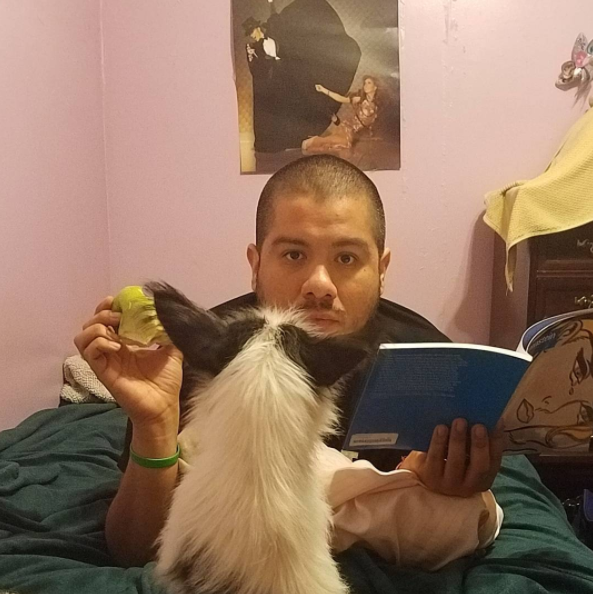
Salgado is also a desperately-needed voice in our current political climate. It’s not often that we hear from people who have grown up in this country undocumented. They tend to live in the shadows — but Salgado is ready to make some noise. He’s brown, loud and very proud to represent his life and his experiences as an undocumented queer man living in this country.
Julio’s work is unapologetically brash and mischievous. His aesthetic is playful yet powerful, confrontational yet convivial, a style deftly achieved by cartoon-like drawings. He manages to convey a lot without saying too much.
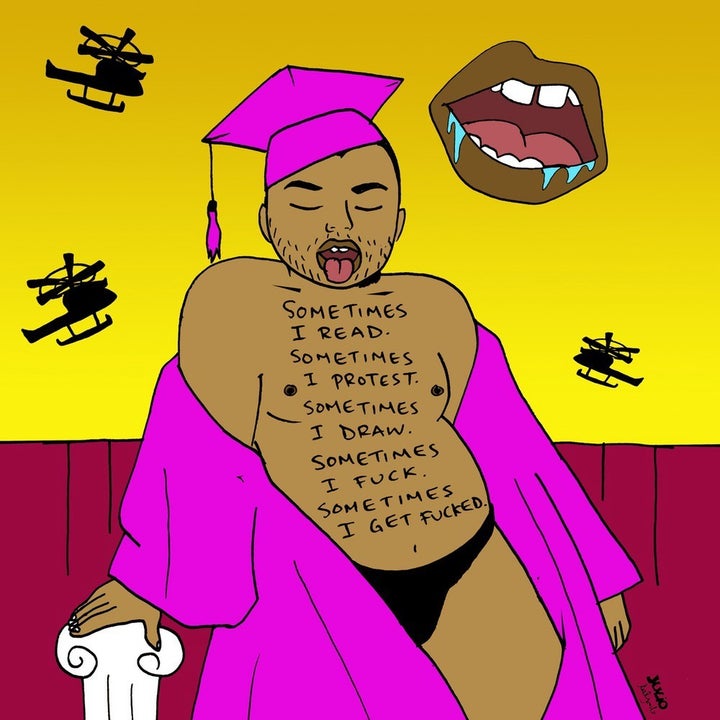
The Establishment caught up with Salgado to discuss everything from growing up undocumented, to how he’s grown to own every part of his identity, to what his outlook is as we tumble headlong into a political era that feels more like a living nightmare.
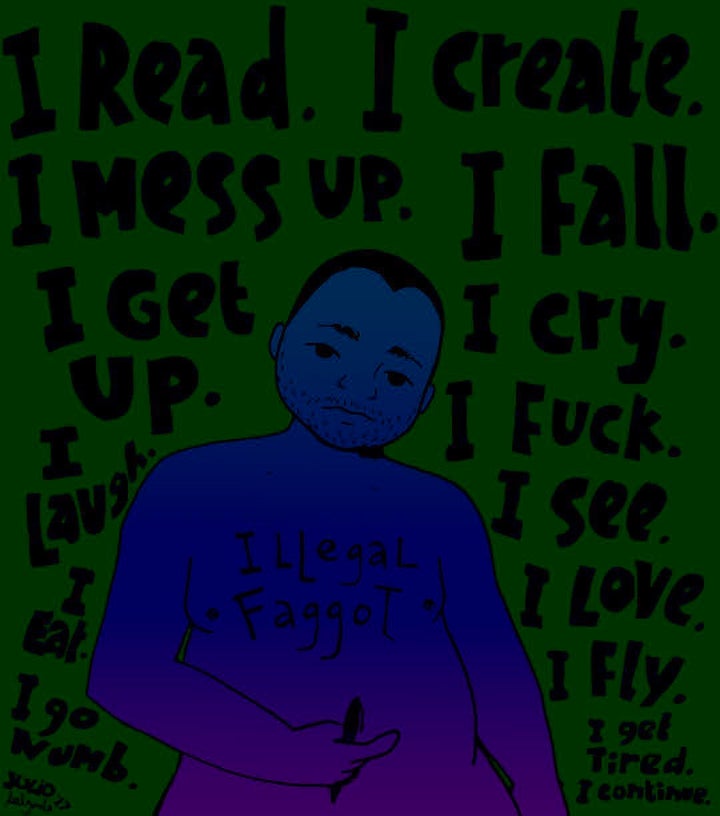
What do you consider your biggest obstacle growing up as an undocumented young man in the U.S.?
The insecurity that my [immigration] status brought in regards to any plans I could make when I was younger. Growing up, art was the thing that I wanted to do. I was obsessed with Frida Kahlo. I wanted to be the Mexican Andy Warhol. I wanted to move to New York and be an artist, but because of my status, some of those plans ... were put on hold.
‘I wanted to be the Mexican Andy Warhol.’
How did living with those insecurities of not knowing what was going to happen next inform your art?
I did a couple of semesters as an art major when I was in Long Beach City Community College. It was very, “It’s not worth it to be an artist” or “what if I graduate with a degree in art, what am I gonna do without papers?” But I think those insecurities challenged my artistic ability, and I was able to create in the midst of that insecurity.
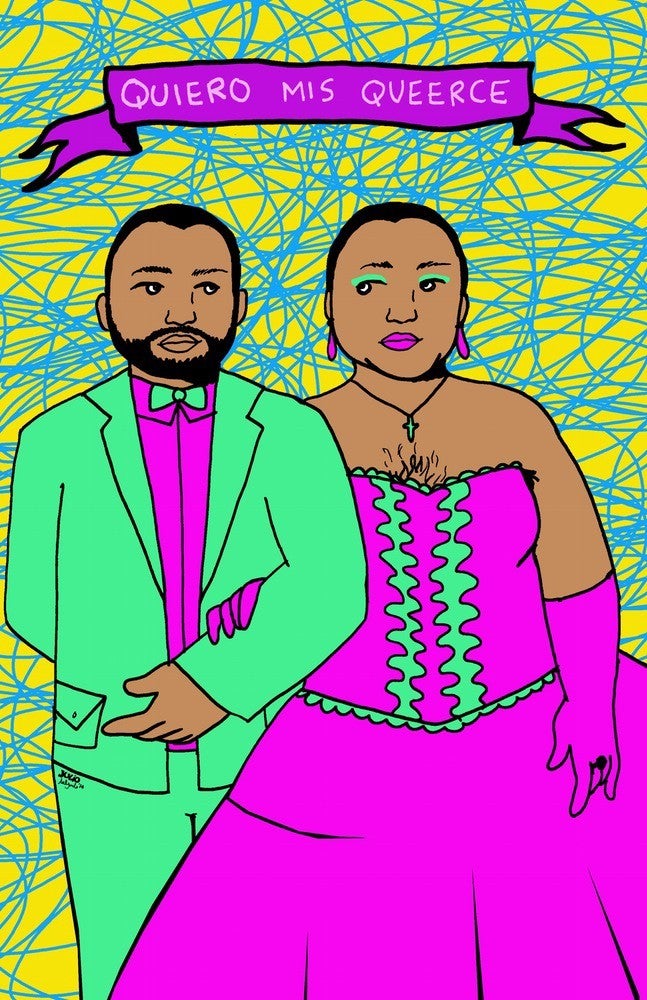
How did college help open your eyes to plans of action you could take to create change?
When I went to California State University in Long Beach, our professors would put us in touch with each other. A lot of [pro immigration reform] groups were formed around then (late 2006 and early 2007). It was a really secretive group. At the time people were not out of the shadows. We weren’t telling everyone we’re undocumented, but we all knew. After the big march in LA around 2008, people said a big monster had woken up.
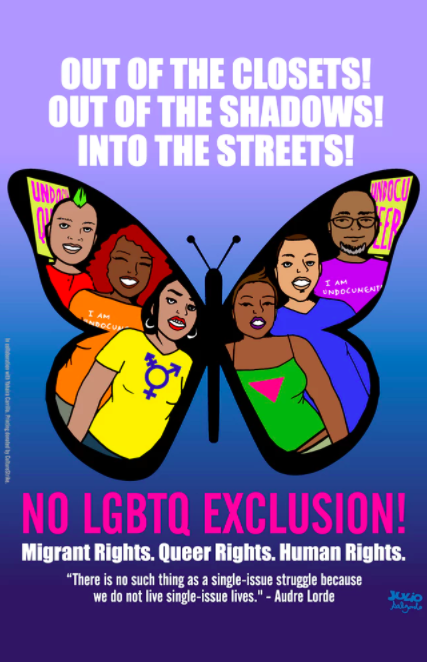
How did you start to find your voice as an artist who happens to also be queer and undocumented?
After we graduated from college, we wanted to do creative stuff together, so we started Dreamers Adrift. It was a media group by undocumented youth. My best friend, Jesus, and I started a series called “Undocumented and Awkward” because we thought a lot of the stories the media were picking up were really sad stories and, while it’s true — when you’re undocumented it can be really hard and it can be really sad — we also wanted to show, “Hey, we’re also having fun. We’re also awkward, we’re also messed up. We’re human beings.”
With “Undocumented and Awkward,” we use humor to kind of make fun of those insecurities we had in the past. We were using this platform of video-making as youth therapy. We were putting all these experiences of being undocumented out there and people, other undocumented folks, started sharing them, saying, “Oh my god that totally happened to me.”
As a queer man, you’re also passionate about not perpetuating the homophobic stereotype among Latino men. How are you doing that?
Because I’m queer, I see we need to talk about how, a lot of times in the migrant rights movement, we don’t want to talk about queer issues. That’s why we started this new series called “Osito.” The point of “Osito,” and the reason why I wanted to make it, was because, in the media, we see the way that specifically straight, brown men are perceived as homophobic.
While that could be true, I really want to pay homage to people like my Dad who ... I don’t know what it’s like to have a gay son. Only he knows what he has to deal with, but I wanted to showcase the fact that gay men and straight men — particularly men of color — can be friends. And it’s the same thing with the relationship I have with Jesus, who’s my roommate, my best friend, and he’s straight. I wanted to pay homage to that friendship using humor.
How do you personally tackle xenophobia?
I think the best way that I personally tackle xenophobia is through my art. I use a lot of humor in my art that combats certain words that people use to describe me. I once got called an illegal faggot on a video I made about being a queer undocumented immigrant, so I made a poster titled “Illegal Faggots For The Destruction Of Borders.” Taking these words back from these hateful people is something I love doing! It pisses the shit out of them!
So you call me an illegal faggot. That’s all you got?
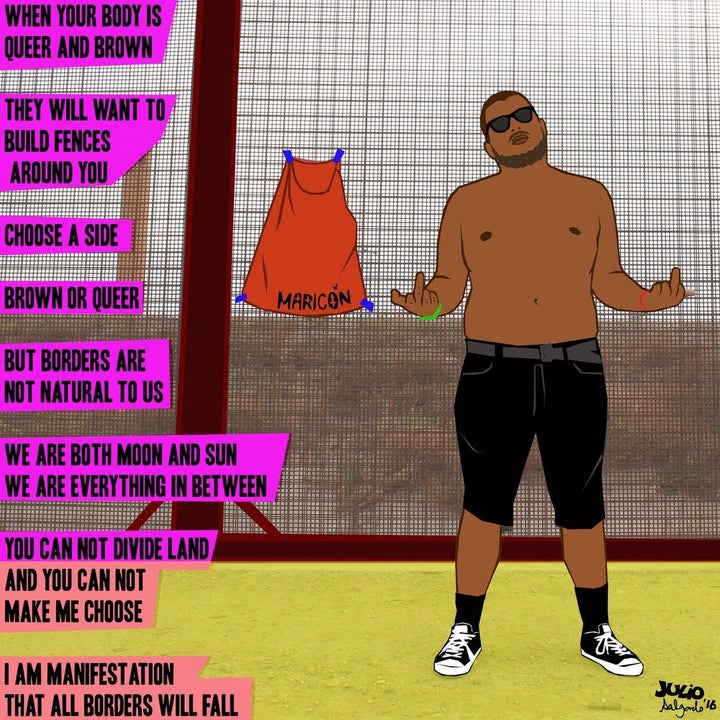
Why is being visible important to you?
Visibility as a queer and undocumented artist, immigrant, and son is very important to me, because we cannot allow others to take over our narratives. Visibility is not just about putting ourselves out there, although it’s very important, but about how we control those narratives. As an artist who is part of these queer and undocumented communities of color, I want to make sure to portray our stories as realistically as possible.
It’s not just showing how much of a “perfect immigrant” I can be, but also showing that we are human beings who cry, get angry, make mistakes, make love, and things that other people do without having to think about their immigration statuses. Nobody but us, as undocumented and queer immigrants, can tell those stories.
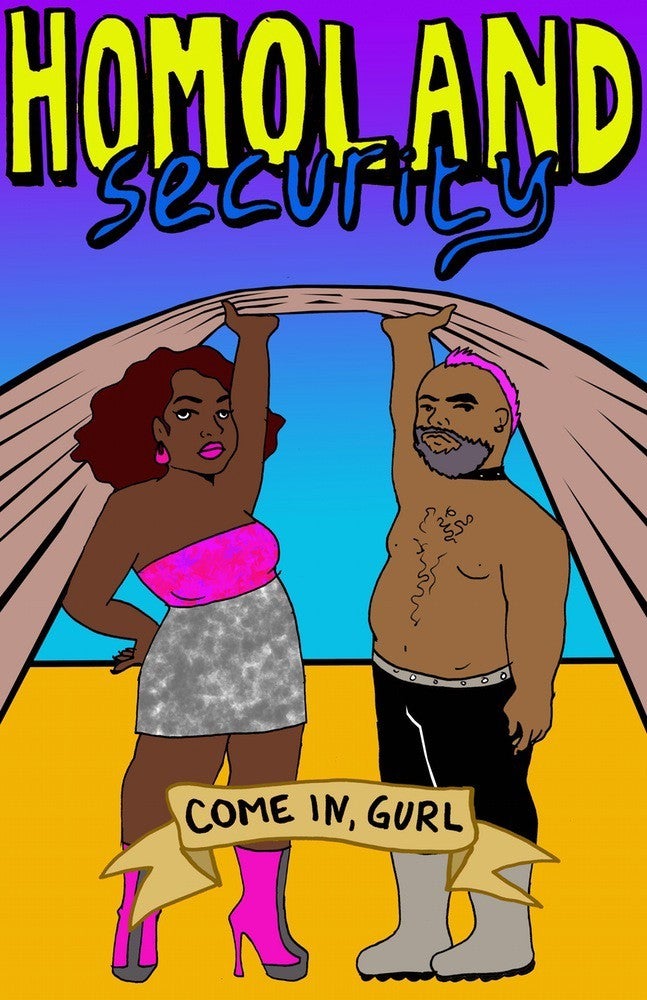
How much more important is all of this under President Donald Trump?
Pushing back against xenophobia and being visible is going to be extremely important under this president. Because we’ve been living in fear for the past couple of years, which saw a raise in the deportation of undocumented immigrants, I know that I have a community behind me in case shit goes down.
Of course, everyone should do this on their own terms. Nobody should be forced to come out of any closet, whether that’s the queer closet or the undocumented closet. And if you do decide to make that move, connect with other folks who will be there for you, not just to sign a petition but to hold emotional space for you. We’re going to need U.S. citizens who marched after the inauguration to step up and make sure to check in with us and ask how they can help.
‘I know that I have a community behind me in case shit goes down.’
I think it’s a blessing to be able to create in times like this, and it’s been my experience to create in times of insecurity and times of “What the hell’s gonna happen?”
I don’t have control over what’s gonna happen — but I have control over my art.
You can support The Establishment’s independent media work by purchasing a ‘Member of the Resistance’ tee or making a donation here.
Other recent stories include:
